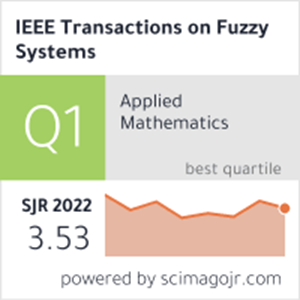Evidential Reasoning With Divisive Hierarchical Clustering for Multisource Information Fusion
IF 11.9
1区 计算机科学
Q1 COMPUTER SCIENCE, ARTIFICIAL INTELLIGENCE
引用次数: 0
Abstract
Dempster–Shafer (DS) evidence theory provides a powerful framework for modeling uncertainty, reasoning, and combining information from multiple sources. However, it may yield counterintuitive results when handling conflicting evidence, thereby affecting decision reliability and limiting practical applications. To address this issue, this work proposes a novel evidential reasoning rule with divisive hierarchical clustering (ER-DHC), consisting of two main modules: evidence clustering and cluster fusion. At first, a new divisive hierarchical algorithm is introduced for evidence clustering, comprising coarse-grained and fine-grained division. In the coarse-grained stage, evidence with different decision preferences is grouped into separate clusters, thus preventing high intracluster conflicts and laying a solid foundation for evidence clustering. The fine-grained division adaptively refines cluster structures using an inflection point detection method, thereby enhancing clustering quality. On this basis, a new cluster fusion strategy is developed, involving intracluster fusion via classical Dempster’s rule and intercluster fusion using a fuzzy preference relation-based weighted approach. This fusion strategy can degenerate into classical DS fusion and weighted fusion, while also introducing a new clustering fusion perspective, offering better flexibility. Finally, the proposed ER-DHC method is applied to the multisource information fusion system, with experimental results demonstrating improved performance of target classification.基于分裂层次聚类的多源信息融合证据推理
Dempster-Shafer (DS)证据理论为建模不确定性、推理和组合来自多个来源的信息提供了一个强大的框架。然而,在处理相互矛盾的证据时,它可能会产生违反直觉的结果,从而影响决策的可靠性并限制实际应用。为了解决这一问题,本文提出了一种新的基于分裂层次聚类(ER-DHC)的证据推理规则,该规则由两个主要模块组成:证据聚类和聚类融合。首先,提出了一种新的证据聚类划分层次算法,包括粗粒度划分和细粒度划分。在粗粒度阶段,将具有不同决策偏好的证据分组到单独的聚类中,从而避免了高聚类冲突,为证据聚类奠定了坚实的基础。细粒度划分采用拐点检测方法自适应细化聚类结构,从而提高聚类质量。在此基础上,提出了基于经典Dempster规则的集群内融合和基于模糊偏好关系加权的集群间融合的集群融合策略。该融合策略可以退化为经典的DS融合和加权融合,同时还引入了新的聚类融合视角,具有更好的灵活性。最后,将所提出的ER-DHC方法应用于多源信息融合系统,实验结果表明该方法的目标分类性能有所提高。
本文章由计算机程序翻译,如有差异,请以英文原文为准。
求助全文
约1分钟内获得全文
求助全文
来源期刊

IEEE Transactions on Fuzzy Systems
工程技术-工程:电子与电气
CiteScore
20.50
自引率
13.40%
发文量
517
审稿时长
3.0 months
期刊介绍:
The IEEE Transactions on Fuzzy Systems is a scholarly journal that focuses on the theory, design, and application of fuzzy systems. It aims to publish high-quality technical papers that contribute significant technical knowledge and exploratory developments in the field of fuzzy systems. The journal particularly emphasizes engineering systems and scientific applications. In addition to research articles, the Transactions also includes a letters section featuring current information, comments, and rebuttals related to published papers.
 求助内容:
求助内容: 应助结果提醒方式:
应助结果提醒方式:


